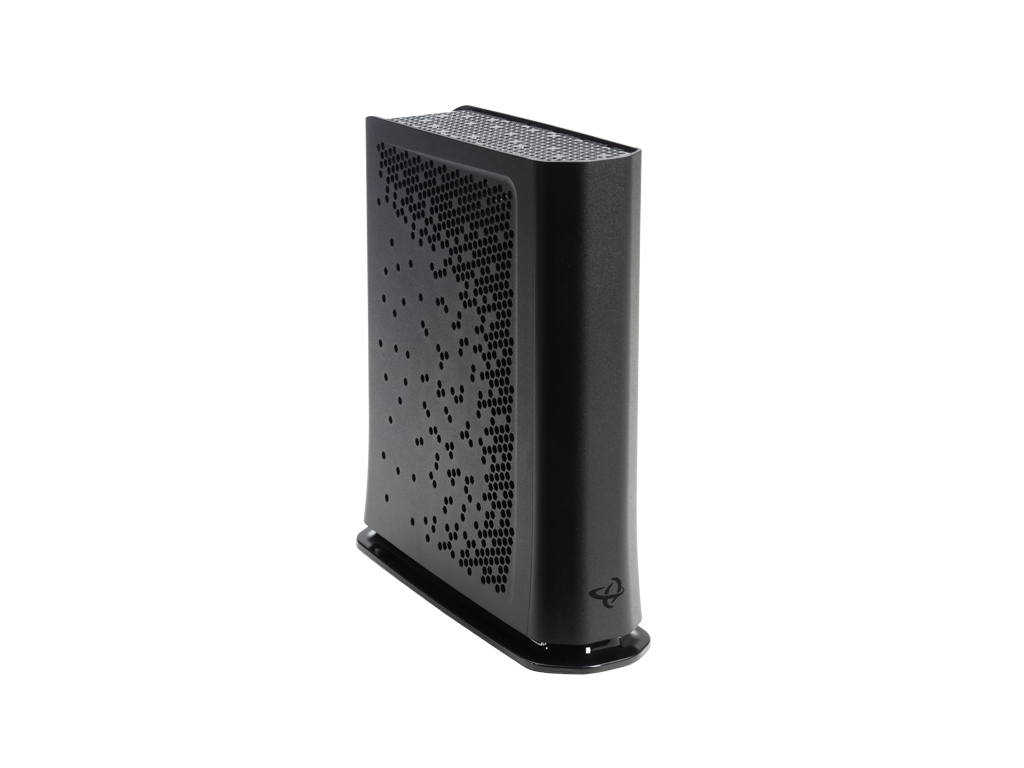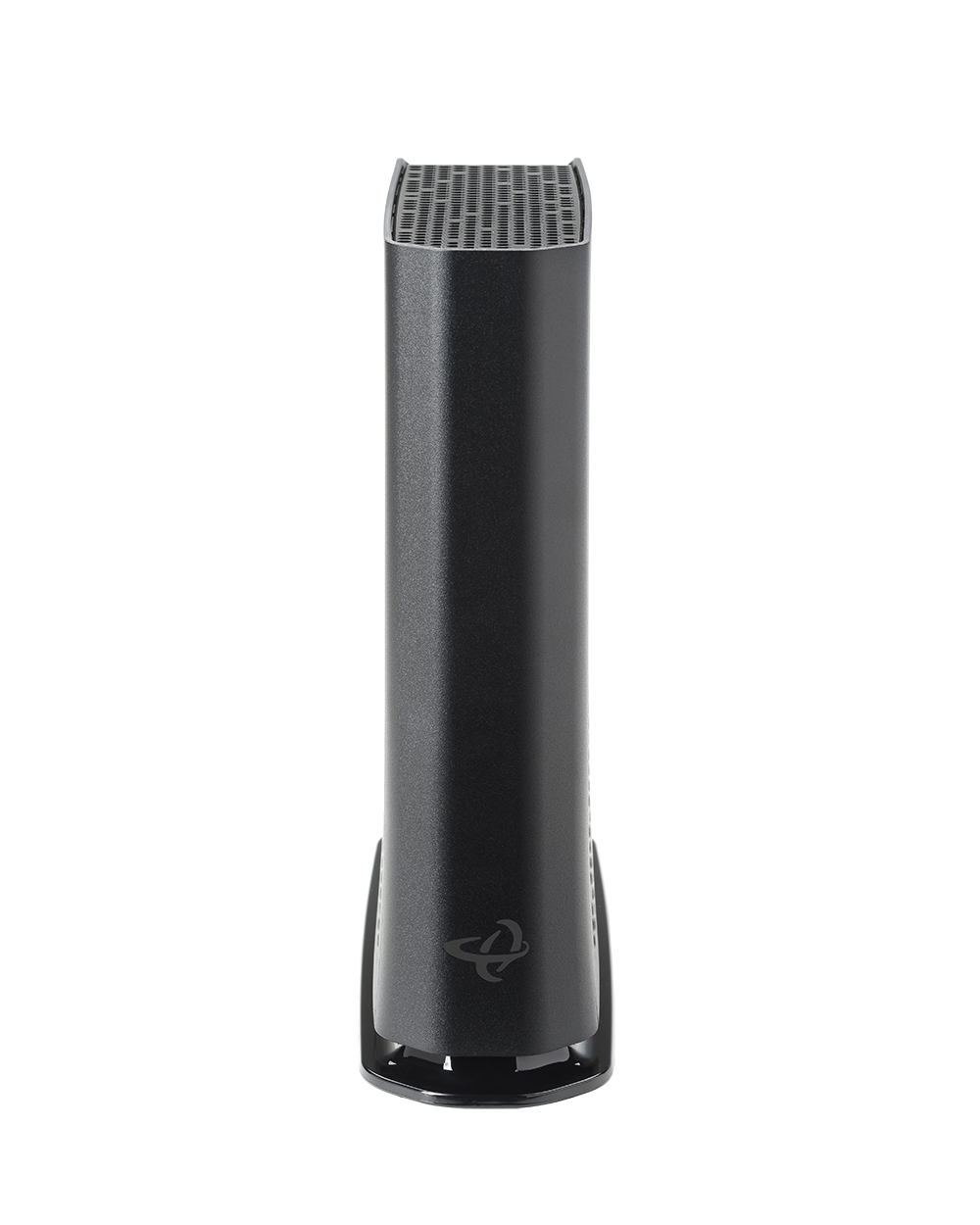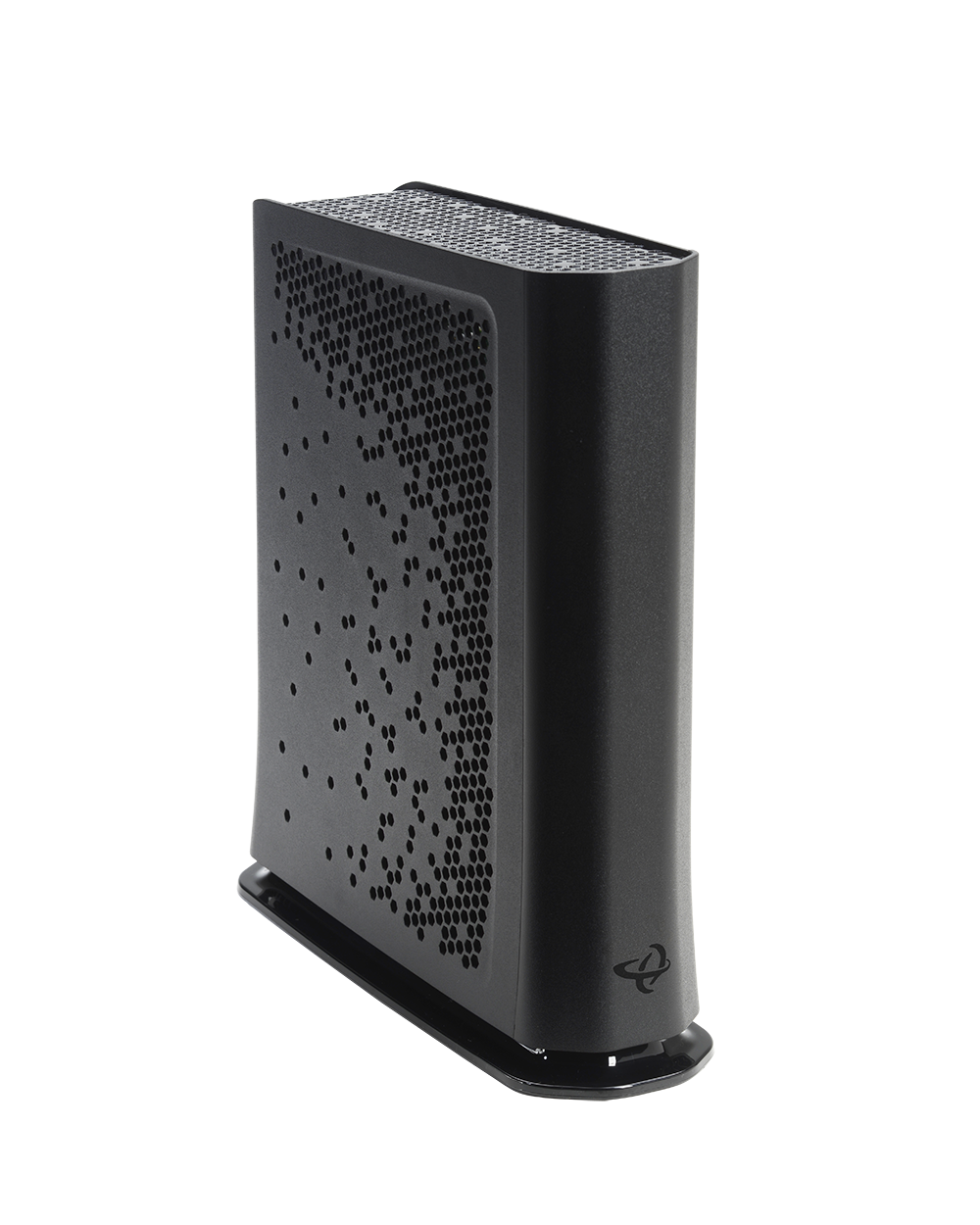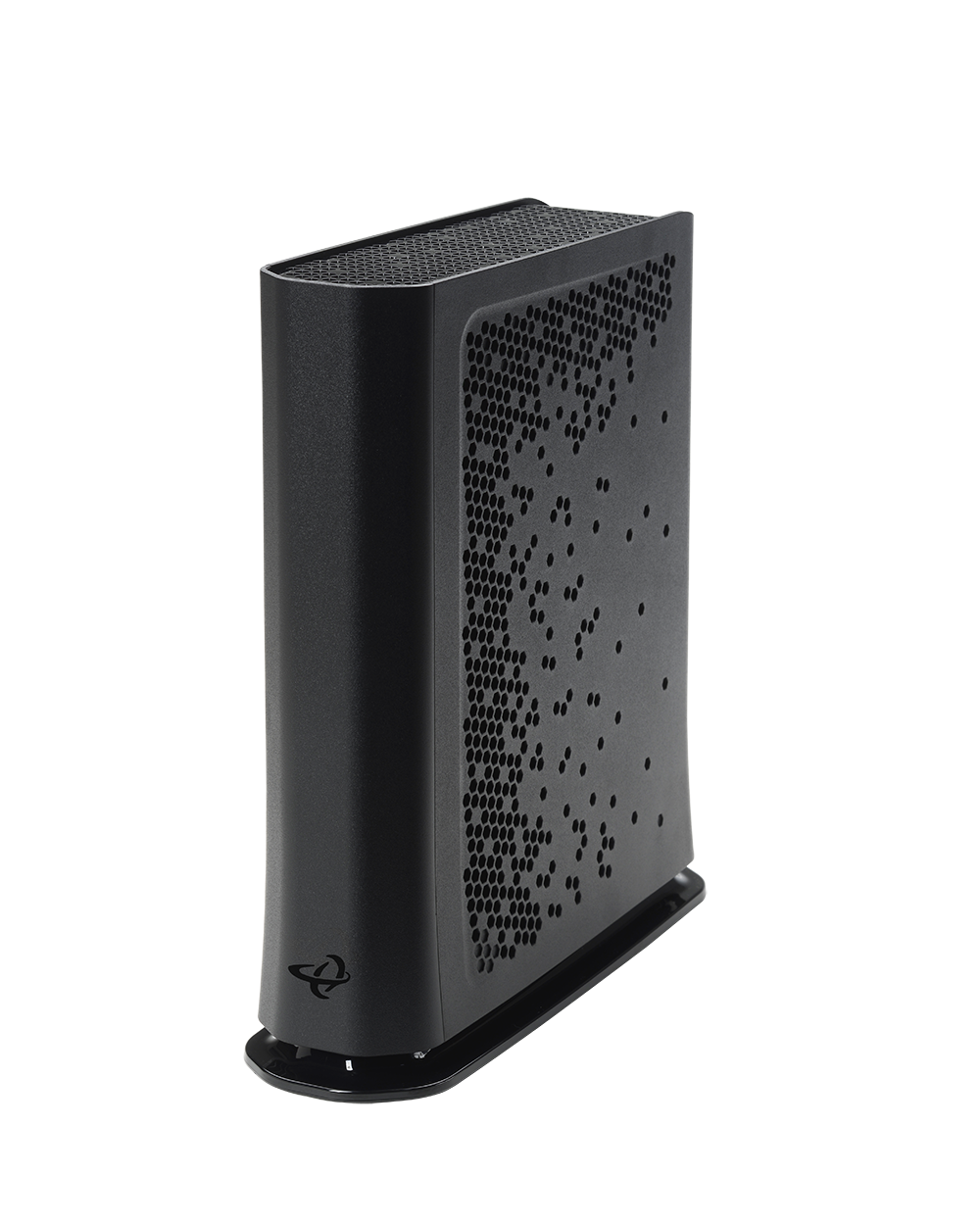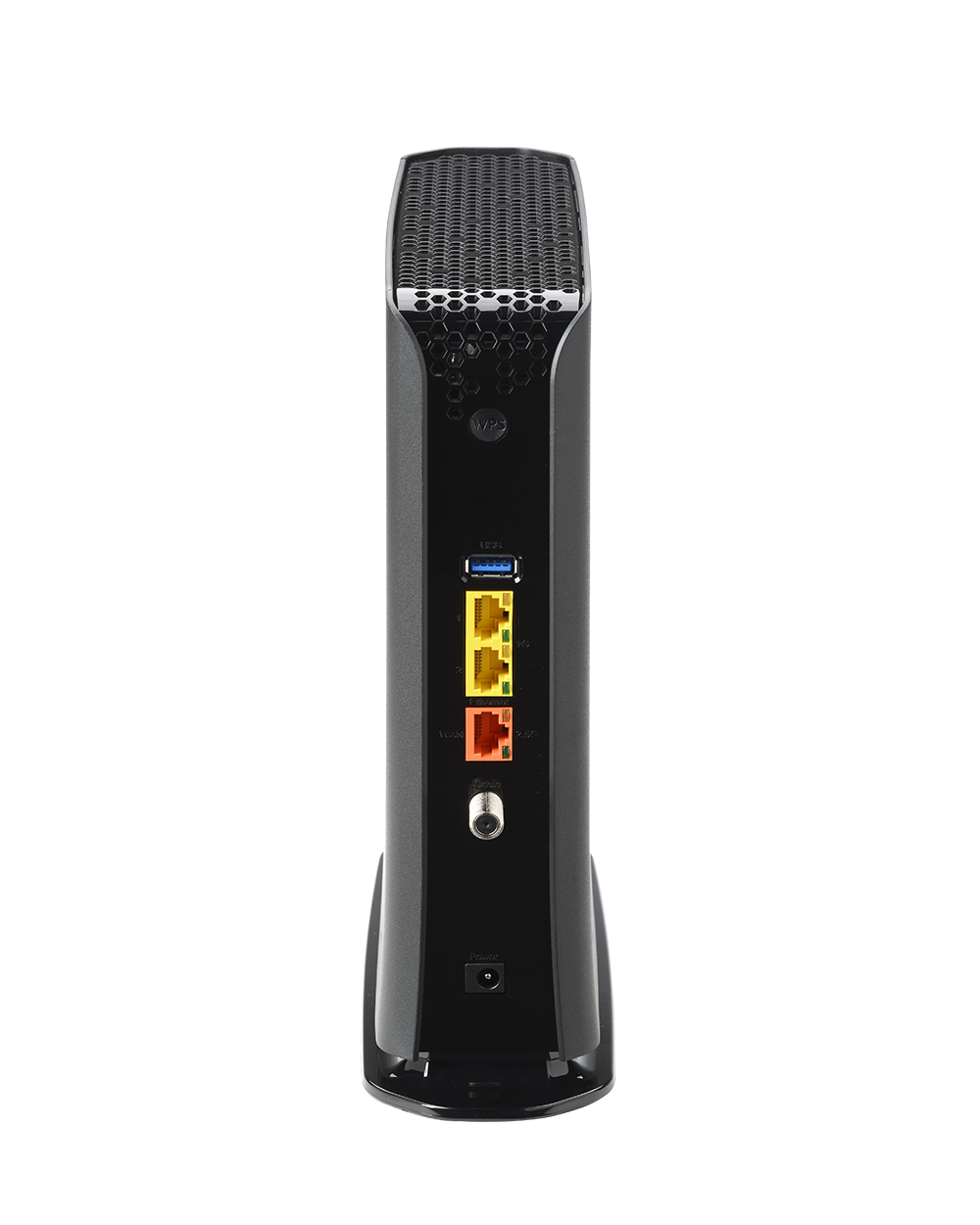DOCSIS 3.1 with DOCSIS 3.0 Compatibility
2×2 OFDM/OFDMA + 32×8 DOCSIS 3.0 bonding ensures multi-gigabit downstream capability with backward compatibility for existing networks.
Flexible Return Path for Future-Ready Upgrades
Switchable upstream (5–42 MHz / 5–85 MHz) supports migration to mid-split deployments without replacing hardware.
Wi-Fi 6 Advantage
Dual-band Wi-Fi 6 with 4×4 5 GHz and 4×4 2.4 GHz radios delivers faster speeds, better range, and more efficient use of spectrum to handle today’s connected homes.
Multi-Gig Wired Connectivity
2× 2.5 Gbps Ethernet ports plus 2× 1 Gbps ports support premium wired devices and high-bandwidth backhaul.
Carrier-Grade Management
TR-069, TR-369, HNAP, SNMP, and TFTP for simplified provisioning and remote troubleshooting—reducing support costs and truck rolls.
TPIA Market Approved
Approved by many Canadian carriers for the TPIA market, ensuring wide compatibility and streamlined deployments for wholesale ISPs.
Benefits for Service Providers
- Optimized for Mid-Tier Service Plans: Provides reliable Wi-Fi 6 and multi-gig wired support without overspecifying for basic packages.
- Simplified Deployments: Combines modem and router functionality into a single, operator-friendly gateway.
- Proven Market Acceptance: Pre-approved for TPIA use by leading Canadian carriers, making it easy to adopt and deploy at scale.
- Subscriber Satisfaction: Meets the growing demand for faster, more stable Wi-Fi and wired performance in modern households.
Key Specifications
- DOCSIS Support: DOCSIS 3.1 (2×2 OFDM/OFDMA) + DOCSIS 3.0 (32×8)
- Upstream: Switchable 5–42 MHz / 5–85 MHz
- Wi-Fi: Dual-band Wi-Fi 6 (4×4 5 GHz + 4×4 2.4 GHz)
- Ethernet Ports: 2× 2.5 Gbps + 2× 1 Gbps
- Management: TR-069, TR-369, HNAP, SNMP, TFTP
- Other Features: IPv4/IPv6, multiple SSIDs, integrated DLNA media server, advanced firewall
Documentation
Other Products to Consider
Product
Modem Type
Frequency
WiFi
Wired LAN
Voice
Learn More about Cable Modems & Routers
What’s the difference between a modem and a cable modem?
A modem and cable modem are different devices because of the services that they connect to. A DSL modem connects to landline or telephone lines (also referred to as Copper by Internet Service Providers). A cable modem connects to Cable TV wiring (coax or coaxial...
Cable Modem Routers: Band Steering Explained
In today’s world, smart devices and connected IoT devices are everywhere in every home. With all these devices connected on one network, it can get difficult to ensure a smooth online experience while streaming, gaming, and video-calling all under the same roof....
Cable Modem Channels Explained
Cable modems communicate directly with Internet service providers (ISP) to transmit data back and forth. This is also known as downstream and upstream channels of data and requires multiple channels for each to offer optimal performance. Here’s everything know about...
Can DOCSIS 3.1 Cable Modems Increase Speeds?
Fast Internet is often considered a household essential. So many everyday things require an Internet connection, from smart home technologies to computers and phones. Your cable modem plays an integral role in achieving the best possible Internet speeds since it’s...
Cable Modems Explained: Channel Bonding
Too much device traffic on one home Wi-Fi network leads to congestion which leads to slow Internet. That’s why modern cable modems have evolved to create more than one “lane” – or channel – to let that traffic through. This feature is called channel bonding. If you...
